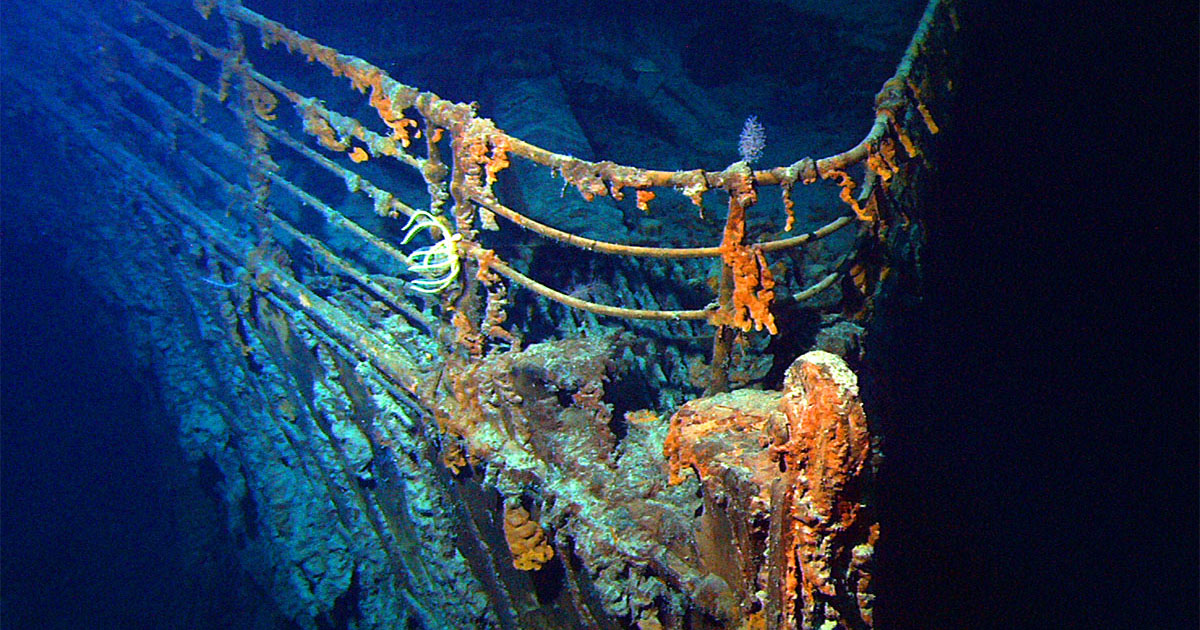
Displaying the decay of metal-hulled ships
In the exhibition James Cameron - Challenging the Deep, nestled amongst submersible vehicles and movie props, is a live science display which allows visitors to observe rusticles. Museum conservators helped develop the display, and in the process have become rather enthusiastic about rusticles...
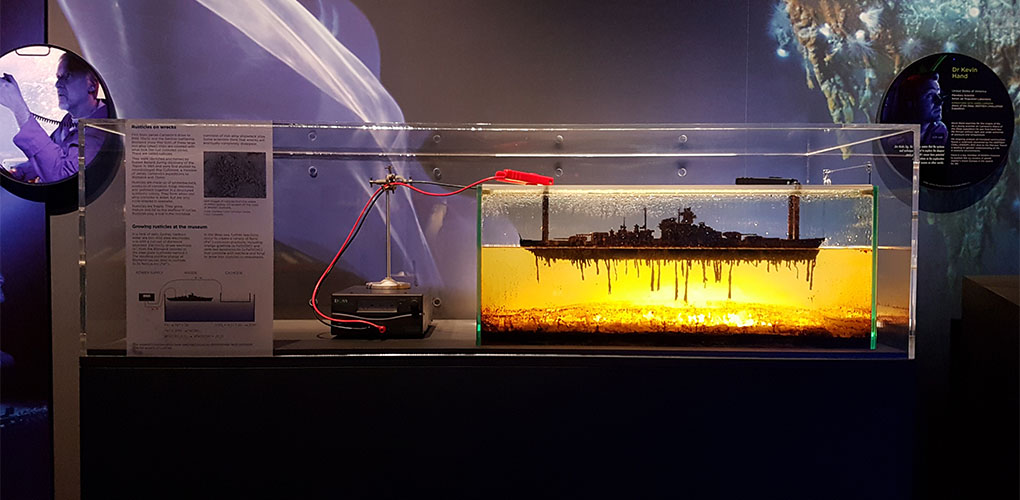
Rusticles, as a live science display at the Museum for James Cameron - Challenging the Deep. Image: Andrew Frolows/ANMM.
Icicles of rust
Robert Ballard, the oceanographer who discovered the wrecks of RMS Titanic and the Second World War German battleship Bismarck in the 1980s, first used the term rusticle to describe the rust coloured icicle shaped corrosion features he saw on these shipwrecks. Since then a number of scientists have tried to understand the mysteries of the rusticle.
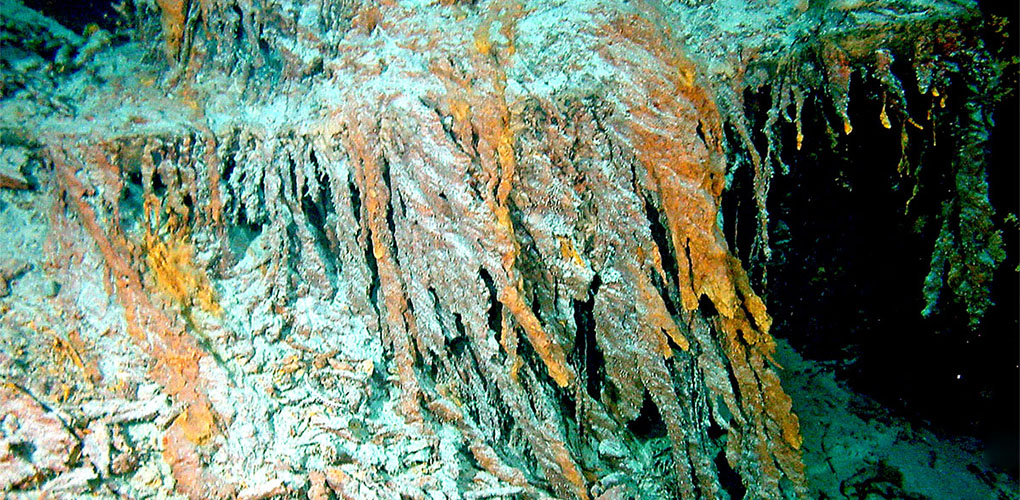
Detached rusticles below port side anchor of RMS Titanic, indicating that the rusticles pass through a cycle of growth, maturation and then fall away. Image: courtesy of Lori Johnston, NOAA-OE.
The riddle of the rusticle
Rusticles are agglomerations of corrosion products (rust), sediment from the ocean floor, material from the wreck (like broken glass) and microorganisms (bacteria and fungi). They are thought to have a lifecycle with stages of growth and maturity over a period of 5 years. Rusticles are very fragile and will naturally fall away from their host.
Roy Cullimore was a microbiologist on James Cameron’s expeditions to the Titanic and Bismarck wrecks. His study of rusticles sampled from the Titanic identified a previously unknown species of bacteria. It was named Halomonas titanicae in honour of the ship.
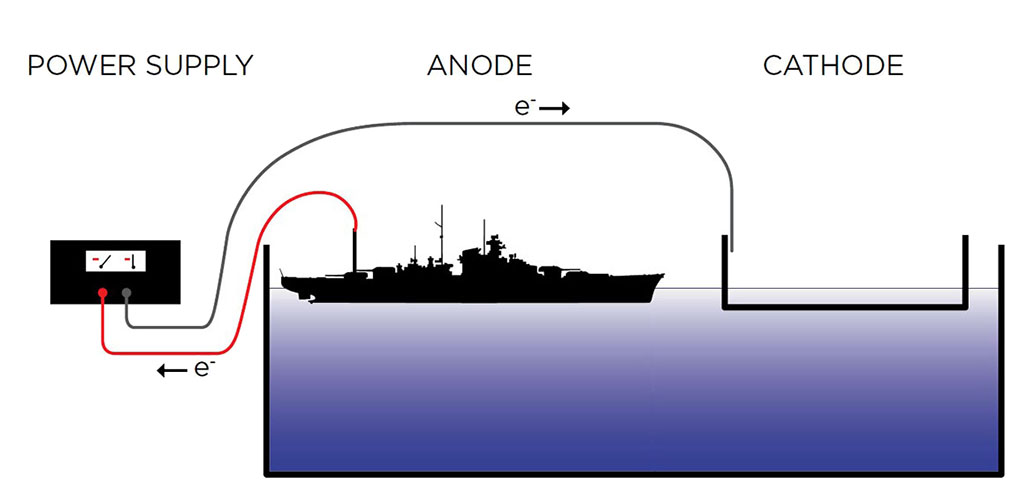
Schematic of the Museum’s rusticle display. Image: ANMM.
Growing rusticles
Conservators, with the help of curators and designers, developed a process to artificially create rusticles for the exhibition. The method involved suspending two mild steel electrodes (anode and cathode) in a tank of salty water and running direct current (DC) between them to generate corrosion.
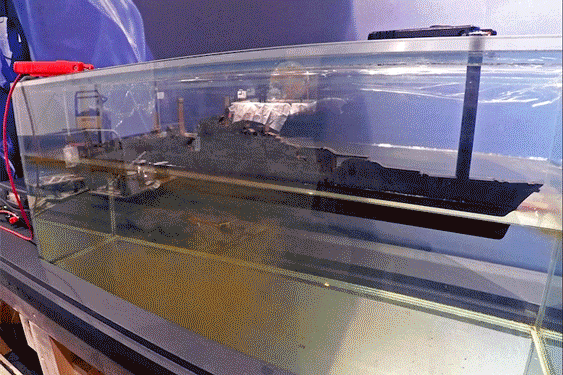
Growing rusticles. This timelapse shows how quickly the tank fills with murky rust after switching the DC power on. Image: Kate Pentecost/ANMM.
The DC current drives electrons (e-) from the anode (cut to the shape of the Bismarck) to the cathode behind it. This causes the Bismarck to corrode and rusticles to grow. Once a healthy crop of rusticles has established itself the power supply was turned off.
Caring for your rusticles
Rusticles are extremely fragile and as the months of the exhibition have passed, one-by-one our rusticles fell to the bottom of the tank. To keep the display looking good, periodically we switch on the DC power supply to grow a new generation of rusticles.
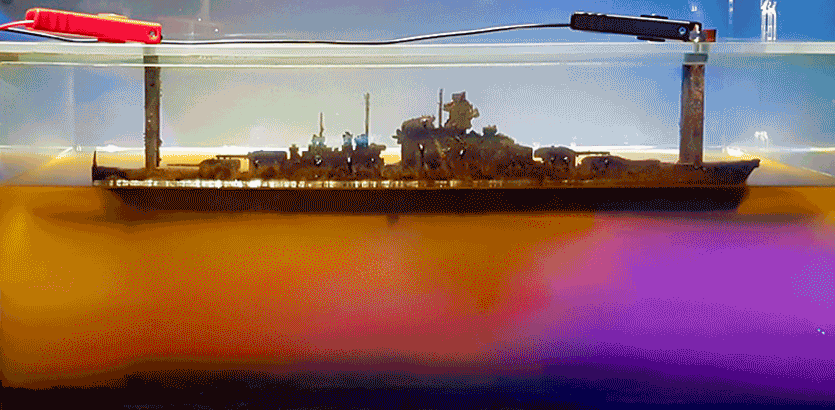
Rusticles before and during maintenance. Images: N. Flood/ANMM.
Education and research
The rusticles have become a favourite part of the Museum’s education program, allowing students to visualise concepts and learn about corrosion as a part of their high school science syllabus.
The scientific community has also shown interest, with researchers from Macquarie University performing a 3D scan and elemental analysis of a sample from one of the Museum’s rusticles.
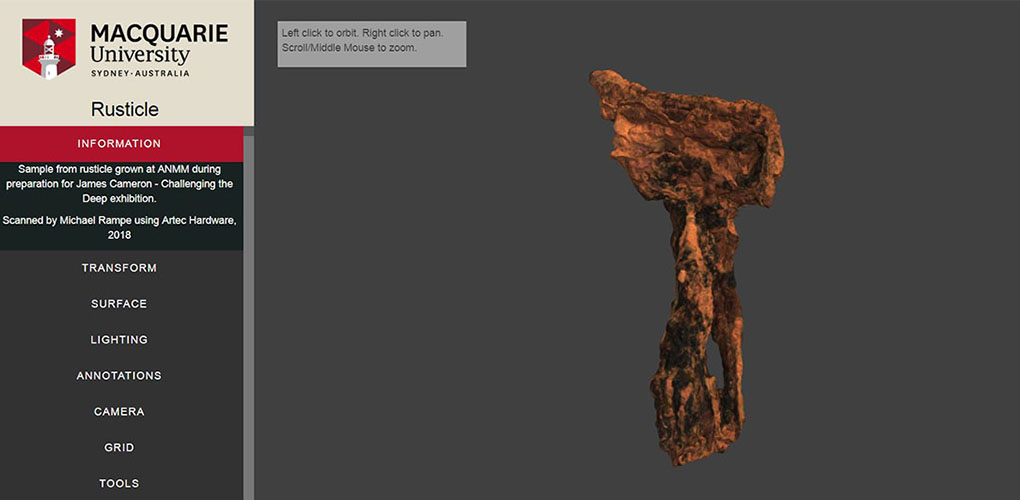
3D model of the rusticle, created by Macquarie University.
The response to the rusticles from visitors, students and James Cameron himself has been exciting and shows the appetite for live science displays. Museum conservators have enjoyed the opportunity to learn, experiment and share their enthusiasm for one of the mysteries of the deep, the rusticle.
Discover secrets of shipwrecks and deep ocean exploration in James Cameron – Challenging the Deep, on now.
Further reading